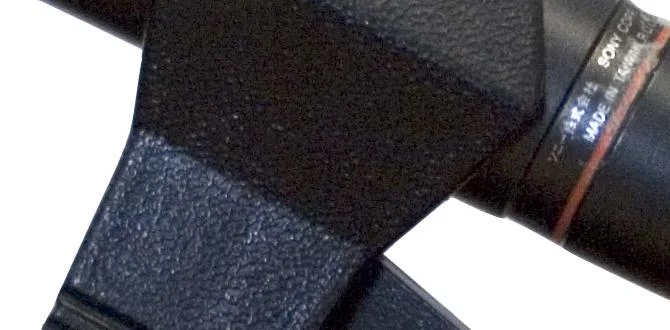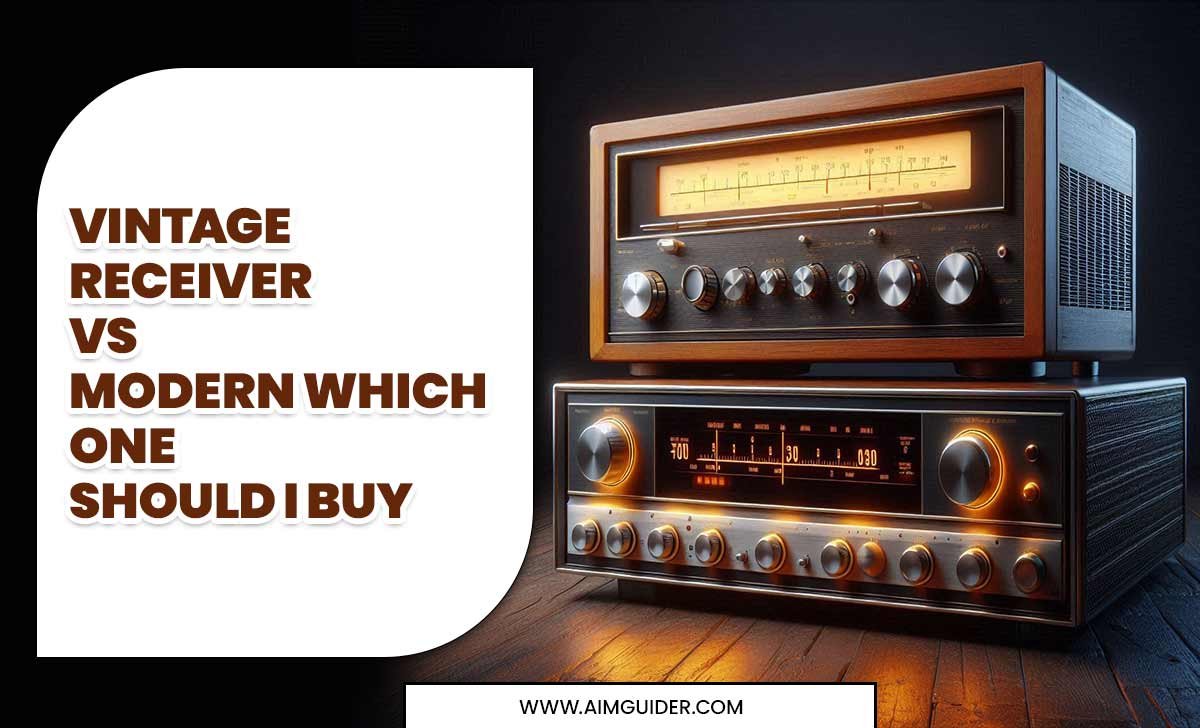USB Microphone Top 10: Essential Gear
Looking for the best USB microphone? You’ve landed in the right spot! Our top 10 USB microphone guide breaks down the essentials, helping you choose the perfect mic for podcasting, streaming, or even just clearer video calls. No tech jargon, just simple advice to get you sounding great.
Finding the right microphone can feel a bit overwhelming, especially with so many options out there. You want clear sound, easy setup, and a fair price. Maybe you’re starting a podcast, leveling up your gaming streams, or just tired of muffled audio in online meetings. It’s a common quest for anyone looking to improve their sound game without diving into complicated audio interfaces. Don’t worry, we’re here to make it simple. We’ll walk through the top USB microphones that deliver amazing quality and ease of use, perfect for beginners and seasoned pros alike. Get ready to upgrade your audio experience!
Why a USB Microphone is Your Best Friend
USB microphones are fantastic for a reason: simplicity. Unlike traditional XLR microphones that need audio interfaces or mixers, USB mics plug directly into your computer’s USB port. This means instant plug-and-play functionality. No extra boxes, no complex wiring, just great sound quality right out of the box. They’re ideal for anyone starting out who wants to avoid a steep learning curve but still achieve professional-sounding audio.
Key Benefits of USB Microphones:
- Easy Setup: Just plug it in and go!
- Portability: Great for recording on the go.
- Cost-Effective: Often more affordable than XLR setups.
- Versatility: Perfect for podcasts, streaming, voiceovers, music, and calls.
- Direct Computer Connection: No need for extra audio equipment.
Choosing Your Perfect USB Microphone: What to Look For
When you’re browsing for your ideal USB microphone, a few key features will make a big difference. Think about what you’ll be using it for most, and then consider these points:
1. Polar Patterns: How it Hears
A polar pattern is important because it dictates which directions the microphone picks up sound from. For most beginners and general use, one or two patterns are usually enough.
- Cardioid: This is the most common and useful pattern for solo podcasters or streamers. It picks up sound from the front and rejects sound from the sides and rear. This helps reduce background noise.
- Omnidirectional: This pattern picks up sound equally from all directions. It’s great for capturing the ambiance of a room or for multi-person interviews where everyone is around the mic.
- Bidirectional (or Figure-8): Picks up sound from the front and the rear, while rejecting sound from the sides. Useful for interviews with two people sitting opposite each other.
- Stereo: Uses two capsules to capture a wide, stereo sound field. Good for recording music or ASMR content.
2. Connectivity: The USB Type
Most USB microphones use USB-A connectors, but some newer models might use USB-C. Make sure your computer has the right port, or you might need an adapter. USB 2.0 is standard, but USB 3.0 can offer slightly faster data transfer, though it’s rarely a critical factor for microphones.
3. Features: What Else Can It Do?
Many USB mics come with handy features that enhance your experience:
- Headphone Jack: Essential for zero-latency monitoring, meaning you can hear yourself in real-time without delay.
- Volume Control: Allows you to adjust your headphone volume directly on the microphone.
- Mute Button: A quick way to silence your mic without fumbling with software settings.
- Gain Control: Adjusts the microphone’s sensitivity, helpful for loud or quiet environments.
- Swivel Mount or Tripod: Built-in stands or mounts make positioning easier.
4. Build Quality and Durability
A microphone is an investment. Look for mics with solid construction, often featuring metal casings, which tend to be more durable and can offer better sound isolation than plastic models.
The USB Microphone Top 10: Essential Gear Guide
Now, let’s dive into the microphones that consistently impress. We’ve selected these based on sound quality, ease of use, features, and overall value for money for various needs. Remember, the “best” mic is subjective and depends on your specific use case and budget!
| Rank | Microphone Model | Ideal For | Key Features | Price Range (Approx.) |
|---|---|---|---|---|
| 1 | Blue Yeti | Podcasting, Streaming, Voiceovers, Studio Recording | Multi-pattern (Cardioid, Omnidirectional, Bidirectional, Stereo), Headphone Jack with Volume Control, Mute Button, Gain Control, Plug-and-Play | $$$ |
| 2 | Rode NT-USB+ | Podcasting, Streaming, Vocals, Instruments | High-quality capsule, Built-in pop filter, Headphone Jack with Volume Control, Plug-and-Play, Excellent sound clarity | $$$ |
| 3 | Audio-Technica AT2020USB+ | Podcasting, Streaming, Home Studio | Clear, natural sound, Headphone Jack with Volume Control, Studio-quality condenser, Plug-and-Play | $$ |
| 4 | HyperX QuadCast S | Streaming, Gaming, Podcasting | Four polar patterns, Built-in shock mount, RGB lighting, Headphone Jack with Volume Control, Mute Button, Tap-to-mute | $$$ |
| 5 | Samson Q2U | Podcasting, Voiceovers, Beginners | USB & XLR outputs, Cardioid pattern, Headphone Jack, Built-in stand adapter, Very affordable | $ |
| 6 | Shure MV7 | Podcasting, Broadcasting, Vocals | USB & XLR outputs, Inspired by SM7B, Touch panel controls, Auto-Level Mode, Headphone Jack | $$$$ |
| 7 | Elgato Wave:3 | Streaming, Content Creation | Proprietary Clipguard technology, Mute button, Headphone jack, Integrated mixer, Built-in filter, USB-C | $$$ |
| 8 | Fifine K669B | Entry-Level Podcasting, Vocals, Budget Streaming | Cardioid pattern, Simple plug-and-play, Includes desk stand, Robust metal build, Very affordable | $ |
| 9 | ATEN AT2005USB | Podcasting, Interviews, Beginners | USB & XLR outputs, Cardioid pattern, Headphone Jack with Volume Control, Sturdy metal construction | $$ |
| 10 | Logitech Blue Snowball iCE | Voice Calls, Basic Podcasting, Budget Streaming | Cardioid pattern, Compact design, Simple plug-and-play, Multiple desktop stands included, Very affordable | $ |
Note: Price ranges ($ = Under $50, $$ = $50-$100, $$$ = $100-$200, $$$$ = Above $200) are estimates and can vary.
Deep Dive: Top Picks Explained
Let’s take a closer look at some of these exceptional USB microphones and why they stand out.
1. Blue Yeti: The All-Rounder
The Blue Yeti is arguably the king of USB microphones for a reason. It’s incredibly versatile, boasting three capsules that allow for an impressive array of polar patterns: cardioid, bidirectional, omnidirectional, and stereo. This means it can adapt to almost any recording situation, from solo voiceovers to interview panels. Its plug-and-play nature makes it super accessible for beginners, and the built-in headphone jack with volume control lets you monitor your audio in real-time.
- Pros: Extremely versatile polar patterns, great sound quality, easy to use.
- Cons: Can be a bit bulky, susceptible to background noise in omnidirectional mode if not managed.
2. Rode NT-USB+: The Broadcast Standard
Rode is a name synonymous with professional audio. The NT-USB+ takes that reputation and packages it into an easy-to-use USB microphone. It delivers a rich, broadcast-quality sound that’s perfect for anyone serious about their podcast or stream. It features a high-quality cardioid condenser capsule and a built-in pop filter to tame plosives (those harsh ‘p’ and ‘b’ sounds). Like the Yeti, it offers zero-latency headphone monitoring.
- Pros: Exceptional audio clarity, professional sound, durable build.
- Cons: No multiple polar patterns, slightly higher price point.
3. Audio-Technica AT2020USB+: Studio Quality for Everyone
Audio-Technica’s AT2020 is a beloved studio condenser microphone, and the AT2020USB+ brings that same clear, articulate sound to the USB world. It’s a fantastic choice for home studio users, podcasters, and streamers who want a clean, detailed sound. It’s a cardioid mic, focusing on sound directly in front of it. The headphone jack and volume control are essential for monitoring, and its robust construction means it can handle daily use.
- Pros: Superb clarity and detail, consistent performance, familiar brand name in audio.
- Cons: Only cardioid pattern, requires a relatively quiet environment for best results.
4. HyperX QuadCast S: For the Gamer and Steamer
Designed with gamers and streamers in mind, the HyperX QuadCast S is as stylish as it is functional. It offers four polar patterns (stereo, omnidirectional, cardioid, and bidirectional), giving you flexibility whether you’re broadcasting solo or interviewing guests. It has a built-in pop filter, an anti-vibration shock mount to reduce desk noise, and a convenient tap-to-mute sensor. Plus, the customizable RGB lighting adds flair to your setup!
- Pros: Multiple polar patterns, excellent features for streamers, great aesthetics.
- Cons: RGB can be a distraction for some, price point is a bit higher.
5. Samson Q2U: The Budget Champion
If you’re on a tight budget but still want pro-quality sound, the Samson Q2U is a revelation. This microphone is incredibly versatile because it offers both USB and XLR outputs. This means you can start with it as a simple USB mic and, as your needs grow, you can upgrade to an XLR setup without needing a new microphone. It focuses on a cardioid pattern, great for reducing background noise, and includes a headphone jack for monitoring. It’s a workhorse that punches well above its weight.
- Pros: Dual USB/XLR output, very affordable, good sound quality for the price, durable.
- Cons: Sound quality isn’t as refined as higher-end models, accessories might be basic.
Getting the Most Out of Your USB Microphone
A great microphone is only half the battle. Here’s how to set yourself up for optimal sound, even as a beginner.
1. Positioning is Key
Don’t just plop your mic down anywhere. For most cardioid microphones, speaking directly into the front of the mic is best. Position it about 4-10 inches from your mouth. Experiment with distance; closer often means more intimate sound, while further away can capture more room sound (which can be good or bad depending on your goal).
2. Control Your Environment
Even the best microphone will pick up unwanted noise. Try to record in the quietest space available. Soft surfaces like curtains, carpets, and upholstered furniture absorb sound and reduce echo. Avoid recording near open windows, fans, or noisy appliances.
For those looking for more in-depth acoustic advice, resources from organizations like the National Institute of Standards and Technology (NIST) can offer valuable insights into acoustics and sound management, although their content can be quite technical.
3. Use a Pop Filter or Windscreen
Plosive sounds (P, B) can cause unwanted ‘pops’ and distortion. A pop filter (a mesh screen that sits between you and the mic) or a foam windscreen can significantly reduce these. Some microphones have them built-in, which is a convenient feature.
4. Monitor Your Audio
Always use headphones when recording. This allows you to hear exactly what the microphone is picking up, including any background noise or distortion. Zero-latency monitoring (listening directly from the mic without a delay) is a must-have feature for many users.
5. Software Settings
Your computer’s operating system (Windows or macOS) will recognize USB microphones automatically. You’ll usually need to select them as your default input device in your sound settings. Most recording software (like Audacity, GarageBand, OBS) will also let you choose your microphone. Adjusting gain (sensitivity) is crucial to avoid clipping (distortion from being too loud) or being too quiet.
USB Microphone vs. XLR Microphone: A Quick Look
While this guide focuses on USB mics, it’s helpful to know the difference, especially if you plan to upgrade later. An XLR microphone uses a three-pin connector and requires an audio interface or mixer to convert the analog signal to digital for your computer. This setup offers more flexibility, better preamps (which amplify the mic signal), and often superior sound quality, but it comes with a higher cost and complexity.
For beginners, a high-quality USB microphone is almost always the superior choice due to its simplicity and affordability. The top USB mics today can compete strongly with entry-level XLR setups in terms of sound quality.
Frequently Asked Questions (FAQ)
Q1: What is the easiest USB microphone for beginners?
The Samson Q2U or the Blue Snowball iCE are excellent choices for beginners. They are affordable, easy to set up (plug-and-play), and produce good sound quality for the price. The Q2U also offers the bonus of an XLR output for future upgrades.
Q2: Do I need a pop filter with a USB microphone?
While some microphones have built-in pop filters, it’s often recommended to use an external pop filter or a foam windscreen, especially if you speak with a lot of plosive sounds (like ‘P’ or ‘B’). It significantly improves clarity and prevents distortion.
Q3: Can I record music with an entry-level USB microphone?
Yes, you can. Entry-level USB microphones like the FIFINE K669B or Blue Snowball iCE can capture basic demos or practice sessions. For professional-quality music recording, you might eventually want to consider dedicated studio condenser microphones, which can often be USB, or XLR mics paired with an audio interface.
Q4: How do I connect my USB microphone to my iPhone or iPad?
You’ll typically need an adapter. For iPhones and iPads with a Lightning port, you’ll need a Lightning to USB Camera Adapter. For newer iPads with USB-C ports, you might just need a simple USB-C to USB-A adapter or a USB-C hub.
Q5: Does a USB microphone improve my voice for calls?
Absolutely! Even basic USB microphones offer a significant upgrade over your laptop’s built-in microphone. They provide clearer, more detailed audio, making you sound much more professional and easier to understand on calls and video conferences.
Q6: What is the difference between a condenser and a dynamic USB microphone?
Condenser microphones are generally more sensitive and capture finer detail, making them great for vocals and instruments in quiet environments. Dynamic microphones are more robust, less sensitive, and better at rejecting background noise, making them ideal for loud environments or live performance, though many USB dynamic mics are designed for voiceover work. Most popular USB mics for general use are condensers.
Conclusion: Your Sound Awaits!
Choosing the right USB microphone is an exciting step towards better recordings, clearer communication, and a more professional online presence. We’ve explored the top contenders, from the versatile Blue Yeti to the budget-friendly Samson Q2U, highlighting what makes each one a great choice for different needs. Remember to consider your primary use, your environment, and your budget. With a reliable USB microphone, you’re well on your way to capturing fantastic audio without the complexity.
Don’t let the technical details bog you down. The power of modern USB microphones is their user-friendliness,







